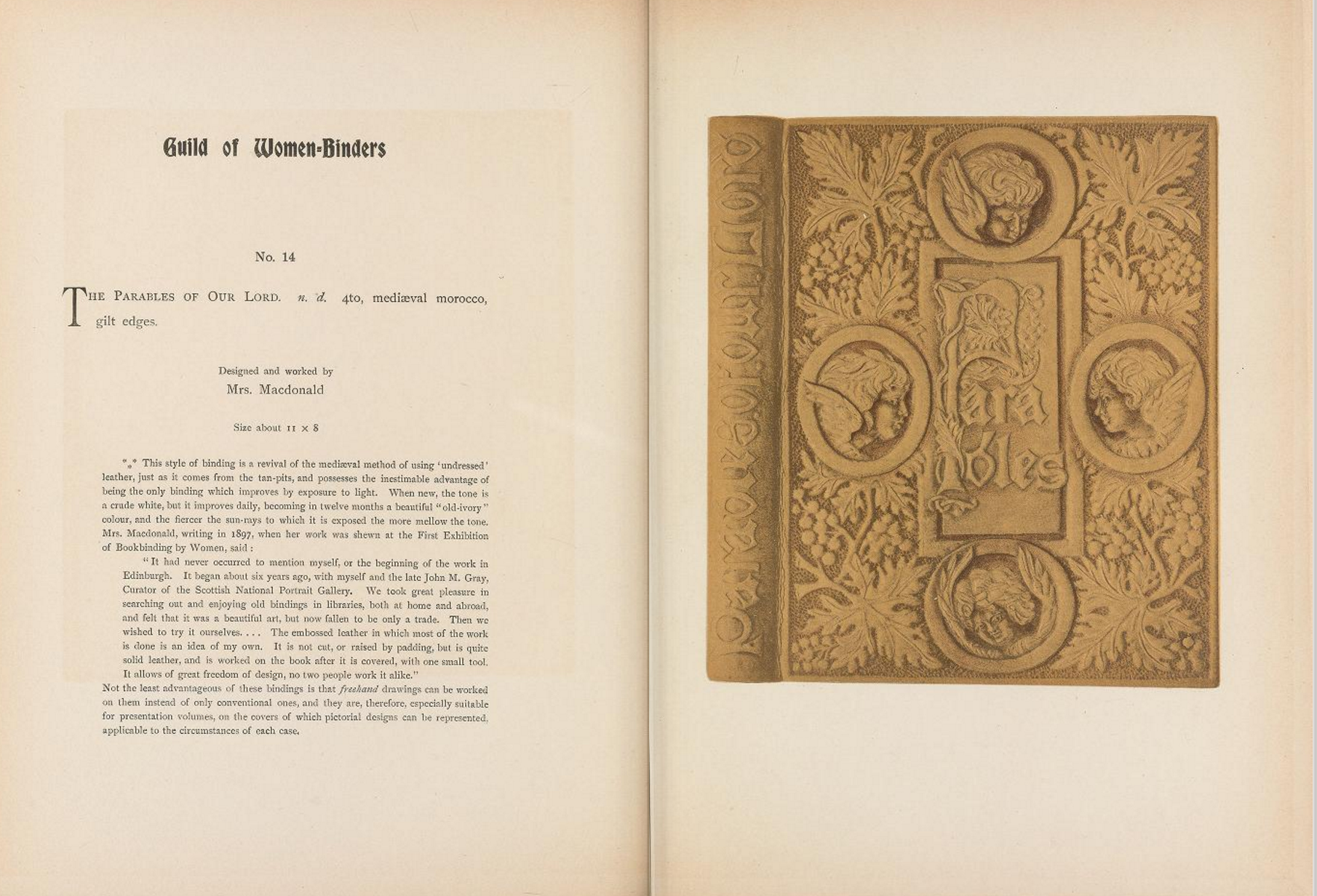Frank Karslake introduced the Guild of Women Binders in 1898 after meeting an influential group of female bookbinders in various parts of Britain; many of whom worked in shops under men or even from their own homes. Karslake first became interested in these makers in 1897 when he visited the Victorian Era Exhibition at the Earl’s Court, held to celebrate Queen Victoria’s Diamond Jubilee, at which several of these bookbinders were exhibiting.
The guild was comprised of a group of British female artisans whose bookbinding techniques possessed distinctive visual qualities. Given period interest in designs that engaged with more traditional crafts, like bookbinding, the guild’s work was considered innovative and aesthetically modern. The group’s designs served as a nod to the so-called “lost crafts” of the Arts and Crafts movement as well as to the sinuous naturalism of Art Nouveau.
Soon after the creation of the women’s guild, Karslake founded the Hampstead Bindery at his bookshop located at 61 Charing Road in London. In 1902, under the instruction of G. Elliot Anstruther (1870-1946) the Hampstead Bindery published the Book bindings of To-morrow: A Record of the work of the guild of women binders and the Hampstead Bindery. The compilation features fifty colored, embossed leaves of book covers, each designed by women of the guild. Among these women were Karslake’s daughter Constance, Edith and Florence de Rheims, Helen Schofield, Frances Knight and most prominently the Scottish born Annie Macdonald ((1849-1924) who acted as the head binder and was one of the most instrumental members. Macdonald is best known for her study and replication of medieval binding techniques, including an involved embossing process in which she would dampen leather, trace a design onto its surface and then work the design in relief using a leather-working tool called a dresden.
The book cover featured here is just one of many designs from Macdonald and other women of the guild featured in publications of famous works throughout Europe and the World. The Hampstead Bindery and guild eventually disbanded in 1904 but its impact would last for years to come. This book can found in the Cooper-Hewitt Smithsonian library and has been digitized, forever memorializing the talents of these gifted and forward thinking women.
Accession number: Z270.85 .G85X quarto
SIRIS link:
Sylvia J. Ferguson is a graduate student in the MA History of Design and Curatorial Studies program offered at Parsons The New School of Design jointly with Cooper Hewitt, Smithsonian Design Museum.
